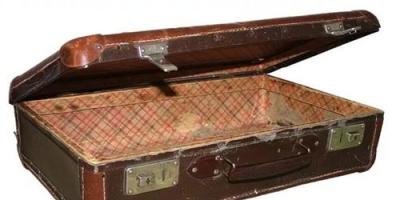The walk-behind tractor is a full-fledged assistant where manual labor in the field or in the garden takes too much time and requires a lot of physical effort. Today, a small-sized unit can be found in almost every yard or household, it is such a useful “thing”. Indeed, the range of tasks that can be easily performed is quite wide, including all kinds of land cultivation, cultivation of beds and even harvesting. And the presence of additional hook-on attachments only enhances the capabilities of the miniature tractor. One of the most effective purchases can be “crow’s feet” for a walk-behind tractor.
Why do walk-behind tractors need crow's feet?
One of the main functions of a walk-behind tractor in a field or garden is high-quality plowing of the land for further planting or sowing. To implement this, cutters are used - the main working element of the walk-behind tractor. This is the name given to the axis on which knives of various configurations are mounted. When rotating around an axis, these knives seem to cut the ground, thereby plowing it. Due to this, cutters are also called soil cutters. When working on a site, not only the soil, but also the plants growing in it can be trimmed. Thus, the cutters plow the soil and also fight weeds.
There are several types of cutters. The most common ones are saber-shaped, with a talking knife shape. As a rule, this is a collapsible design. The “crow’s feet” attachment to the walk-behind tractor, on the contrary, does not disassemble into parts, but has a cast configuration. They are made from carbon steel. The main feature of crow's feet is the triangular shape of the ends of the knives, which ensures sufficient crumbling and mixing of the soil. This continuous configuration is due to the need for strength when working on hard ground, virgin soil, and its cultivation. This can be considered areas where the soil has large clods.
Features of plowing with crow's feet using a walk-behind tractor
Basically, the described attachment is used for plowing a potato plot, when it is necessary to remove large clods of soil or prevent the development of . By the way, gardeners note the fact that weeds are perfectly wrapped around the crow’s feet, but they are not cut down. In this regard, when talking about whether it is necessary to sharpen crow’s feet on a walk-behind tractor, we can recommend performing this procedure. The fact is that manufacturers do not sharpen the edges of the knives of this attachment. After sharpening, you will notice that medium-sized weeds are easier to chop, and working on hard ground is much easier.
How to choose crow's feet cutters?
When choosing this important component of a walk-behind tractor, first of all, it is important to pay attention to the size of the “crow’s feet” for the walk-behind tractor. This is more about matching the diameter of the axis of the landing shaft nozzle to the model of your unit. They are produced in sizes 30 mm and 25 mm. Moreover, three rows of three knives are installed on cutters with a diameter of 25 mm. Such products are suitable for walk-behind tractors such as “Texas”, “Neva”, “Caiman”, “Mole” and others. Models  "crow's feet" with an axis diameter of 30 mm are selected for walk-behind tractors such as "Cascade", "Salyut", "Caiman Vario", "Master Yard" and others. This product has not three, but four rows of knives. Moreover, the width of the treated surface is increased.
"crow's feet" with an axis diameter of 30 mm are selected for walk-behind tractors such as "Cascade", "Salyut", "Caiman Vario", "Master Yard" and others. This product has not three, but four rows of knives. Moreover, the width of the treated surface is increased.
Another criterion that is worth paying attention to when selecting crow's feet cutters for a walk-behind tractor is the outer diameter, which, accordingly, determines the plowing depth. The larger this diameter, the deeper the knives can cut into the soil. Meanwhile, the quality of the crow's feet must be up to par, otherwise metal breakdown cannot be avoided.
An agricultural device such as a walk-behind tractor has not lost its popularity over time. On the contrary, the development of technology has ensured the emergence of new popular mechanisms with a wider range of functionality.
As you know, with this machine you can perform whole line tasks: transport cargo, cultivate soil and simply use it as vehicle. Since this equipment is most widespread in rural areas, you should figure out exactly how to make such a part as a cutter for a walk-behind tractor with your own hands. This structural element has many beneficial properties, but acquire finished device quite unprofitable from a financial point of view, which explains the need for self-installation.
The main functions of cutters for a walk-behind tractor
This type of equipment is hinged, so it can be dismantled and replaced at any time. Milling cutter - extremely important detail walk-behind tractor, since during operation it directly affects many factors:
Quality of tillage;
Ease of driving;
Condition of the walk-behind tractor transmission;
Stability of the vehicle engine.
It’s no wonder that many owners wonder how to assemble a cutter on a walk-behind tractor with their own hands. Only with the help of this element can you qualitatively loosen the soil and prepare it for sowing, while simultaneously removing all the weeds.
The main part of any soil cutter is the knives. For walk-behind milling cutters you can find different samples, manufactured, however, using similar technology. The quality and depth of tillage directly depends on what material is used in the production process.
Advantages of cutters for walk-behind tractors
Among the undeniable advantages that these parts have, it is worth highlighting the following:
- cutters do an excellent job with weeds, destroying them without a trace;
- soil treated with such an element is well loosened, which promotes mixing of its layers and has a positive effect on fertility indicators;
- With the help of such knives you can easily distribute fertilizers.

In addition, when making a part such as a milling cutter, you can be sure that it will cope with absolutely any type of soil, be it clayey, moist or very hard soil. Due to this, walk-behind tractors equipped similar devices, are common in regions with very different climates and natural conditions.
Types of cutters for motor cultivators
The development was also reflected in the design of such equipment. So, there are several types of cutters, but the most common of them are two:
- System with saber-shaped knives.
- Milling cutters, referred to among consumers as “ Crow's feet", which is due to their unusual shape.
The first product is extremely common among consumers, largely due to the fact that it can be used to perform almost any task. At the same time, you can assemble a saber-shaped cutter for a walk-behind tractor with your own hands without any difficulties. One of the advantages of its design is the ability to remove the knives at any time, since they are made of steel, which, as we know, cannot be processed by welding.

Milling cutters for the walk-behind tractor "Crow's feet" are more modern products. The main purpose of such a mechanism is processing hard rocks soil. When using this model, it is important to remember that you need to work with it only on level and clean ground, otherwise there is a possibility that weeds will constantly wrap around the knives. This product is perfect for planting crops and can be used even in the cold season.
Materials for assembling cutters
Before assembling the cutter on a walk-behind tractor, it is necessary to measure the parameters of the area that is planned to be processed, and only then, based on the data obtained, assemble the mechanism. To make the design as correct as possible, you need to have the following list of materials available:
- not a very long metal tube with a diameter of 42 mm;
- parts that will act as elements for loosening the earth;
- welding machine;
- Bulgarian.
When figuring out how to properly assemble cutters on a walk-behind tractor, many owners wonder about the design of soil rippers. The basis of these parts may well be car springs, which are bent and then welded to the main pipe at the desired angle.
The process of assembling cutters for a walk-behind tractor
As mentioned earlier, you need to start work by taking measurements of the site. After completing all the calculations, you can begin assembly. With help welding machine The knives of the future cutter should be attached to a pre-prepared pipe. You can first sharpen the edges of the elements to the desired degree.

The resulting mechanism is fixed on the coupling unit, and the work can be considered complete. To ensure that the entire system is functioning, you can perform a test run and adjust the device.
When assembling such a structure as a cutter for a walk-behind tractor with your own hands, it is worth remembering that to achieve the maximum long term Service of the product is possible only by strictly observing all the rules for its operation. When turning on the mechanism, the knives must be held up and under no circumstances allowed to touch the ground. Having started the walk-behind tractor, you can slowly lower the cutter and get to work.
The easiest way to assemble such a device would be for someone who has some experience in the field of metalworking. A pre-compiled diagram will allow you to simplify the installation process, as well as quality tools and materials.
When deciding how to properly assemble cutters on a walk-behind tractor, many owners are faced with the problem of not being able to make small and shaped parts of the structure themselves. To do this, it is best to seek help from a professional blacksmith, who will do this work much faster and with better quality.

In addition, do not forget that an incorrectly assembled system entails a change in the direction of rotation of the knives, which, in turn, can lead to equipment breakdown.
Having studied all the recommendations described above, we can conclude that it is absolutely possible to construct a mechanism such as a milling cutter for a walk-behind tractor on your own; it is only important to observe all the details of the work, and then the device will last for decades without the need for repairs.
Cultivation or milling of soil is one of the the most important stages processing land plot. During the milling process, the soil is loosened and mixed. The choice of depth for such cultivation is very important; up to 25 cm will be optimal. Thus, the properties of the soil, its fertility are improved, and the land area is leveled. This process is also often combined with the application of fertilizers.
For owners of dachas and vegetable gardens, mechanization of this process has become more accessible with the advent of walk-behind tractors. The choice between a shovel and a walk-behind tractor with a milling cutter became obvious. The power of the walk-behind tractor is quite enough to process not only sandy soils, but also virgin soil. The main thing here is to competently approach the choice of additional equipment.
What depends on the correct choice of cutter for a walk-behind tractor:
- Quality of cultivation. In most cases, you can even do without a plow;
- Your strength and time that you will spend on completing a certain amount of work;
- Ease of control of the walk-behind tractor and load on the operator during milling;
- Load on the walk-behind tractor, in particular on the gearbox.
Today, you can already choose the cutters that will be used to mount your walk-behind tractor, depending on its power and the type of soil being processed.
Factory cutter

Most walk-behind tractors and cultivators are equipped with such cutters when sold. Depending on the situation, they can be assembled or disassembled. You can choose any walk-behind tractor you want, but unfortunately, you cannot choose which cutter to equip it with initially.
The design consists of an axis with welded plates, to which saber-shaped knives are directly attached. The finished cutter can consist of several such sections connected to each other using bolts. By adding or removing a section, you can adjust the width of the cultivation.
Pros and cons of a factory cutter:
The most important plus is that it comes immediately complete with the walk-behind tractor. The cutter copes well with its main task, provided that the work is carried out on a previously processed area.
Now about the realities. When it comes to Chinese walk-behind tractors, the cutter blades are their weak point. Bad metal will make itself felt, perhaps even in the first season; bolts and welding joints also leave much to be desired. If you cultivate virgin land or where there is a lot of grass, the process will not be pleasant. It will be difficult to hold the walk-behind tractor, and the load on the gearbox will be high.
But don’t rush to get upset, it’s no longer a problem to find quality knives Polish or Ukrainian production, there is plenty to choose from, the issue with bolts is even easier to solve. And making a better welded joint is not a problem for our brother either.

Such a cutter is an all-welded structure, an axis and knives welded to it, with triangular tips or, as they are called, crow's feet.
Pros and cons of the crow's feet cutter
The main disadvantage is the non-collapsible design. But this is not significant if you choose a high-quality cutter.
But there are many advantages:
- You yourself choose the number of sections to install on the walk-behind tractor. Depending on the technical characteristics your walk-behind tractor and your requirements, thus adjusting the milling width.
- Can handle harder soils.
- It breaks up plant residues better.
- The bushing can be hexagonal or round. Important point when choosing attachments, due to which it can be used on different models walk-behind tractors.
- Reduces the load on the gearbox.
- Significantly facilitates handling.
Based on our experience, it is the crow's feet cutter that is optimal choice for an air-cooled walk-behind tractor. Largely due to its versatility, reliability and practicality.
“Virgin” - spiral cutter for walk-behind tractor


If you need to cultivate virgin land, best choice there will be a spiral cutter. Like the Crow's Feet, the Tselina has an all-welded design, this was done specifically to strengthen it and allow it to withstand higher loads. Spiral-welded knives are equipped with “virgin” type tips.
Pros and cons of the Celina cutter
The disadvantages, perhaps, include more slow work, but it’s no wonder, you can’t accelerate on virgin soil. As a disadvantage, it can be noted that during the cultivation process, the soil is pushed from the center to the edges. A small ditch will form and the land will require subsequent leveling.
The advantages are difficult to overestimate:
- It copes with virgin soil better than other existing cutters.
- Great depth of cultivation.
- Excellent soil loosening.
- Very reliable and durable design.
So, we can safely conclude that for better processing of your land, you should not opt for a factory cutter. If you want to increase productivity, reduce the load on the walk-behind tractor and save time and effort, we recommend choosing a crow’s foot cutter. If you are faced with difficult development of virgin land, the “Virgin” soil cutter is your choice.
Milling cutters for walk-behind tractor. Choice, comparison. was last modified: April 24th, 2018 by administrator
The milling cutter is the main working “organ” of the cultivator. With its help, loosening, weeding, and preparing the soil for planting are carried out. For mechanical models, as well as ultra-light and lightweight devices, it acts as the only functional element. In medium and heavy installations, trailer equipment is also used.
Types of cutters
The device consists of four curved knives - “petals”, attached to a shaft. Most of them are directional: when assembling, the direction of movement must be taken into account. Knives are usually bent in both directions, except for those located at the edges of the shaft. There are models in which all the “petals” are bent only towards the gearbox: this prevents damage to plants during loosening. However, in this case the working width is reduced.
Elements are made from stamped steel - for the lightest devices, and from steel strip, often forged. The last option is the most durable. As a rule, the cutter is a separate part, but there are models in which two rotary cutters are mounted on one shaft.

Two types of knives are used.
- Sharpened - the “petal” enters the ground more easily and does not allow adhesion to the soil. Accordingly, the load on the engine is reduced and fuel consumption is reduced. On the other hand, sharp blades cut the roots of weeds, some of them remain in the ground and germinate again. Sharpened cutters must be used with great care.
- With a semicircular edge - they are safer, but when loosening they experience more resistance and are more likely to get stuck. This element removes weeds more effectively, since it does not cut, but wraps the root and pulls it out of the soil.
The diameter of the cultivator cutter determines the maximum plowing depth. Relative is set by the opener.
The “petals” are connected in two ways:
- on rivets - the element cannot be disassembled. This difficulty is not so much during storage as during transportation;
- bolted - a collapsible part. The photo shows a sample.

Welding is not used for connections - this reduces the strength of the product.
Features of operation
If the diameter determines the depth, then the quantity regulates the width of the grip. The most common option is two or three pairs of elements. There are cultivators with one or four pairs. By changing the number of tillers, you can adjust the width of the processed strip.

The number of elements also depends on the type of soil. To process loose, light soil with your own hands, the maximum number is set. For loam and virgin soil their number decreases.
Assembling cultivator cutters
The most important thing when connecting with your own hands is to follow the direction: the sharpened part of the “petal” should be located in the direction of movement of the cultivator.
- The number of sections is determined by the type of fastening plates: if they are located equally, then a maximum of three elements are installed. If they are offset relative to each other, then four or six.
- Knives are marked - for the right and for the left side.
- The assembly of the cultivator cutter depends on the model - three- or four-blade.
- Installation of the three-leaf one begins with fixing one knife to the plate - the bolt is not fully tightened at the first stage. The other two are fixed with reverse side plates.
- Installation of a four-blade or six-blade blade comes down to alternately attaching the right and left blades. It is first recommended to separate the right and left “petals” for each part. An additional section, if needed, is mounted using a pin.
- Fastening is carried out with bolts as rigidly as possible.
- The last thing to install on the cultivator shaft is a protective disk: it protects the plants from damage.

In the video, do-it-yourself assembly instructions are presented step by step.
Care instructions
Forged steel is usually used in manufacturing, as it is stronger and more resistant to corrosion, but this does not eliminate the need for maintenance.

After finishing the work, the rototillers must be cleaned of soil, roots, wire and the like. You can use a rag or brush, but do not use solvents as a cleaning agent.
Before long-term storage The knives are covered with a layer of solid oil, and the ends of the shaft are covered with graphite lubricant.

Knife sharpening
The design of the cutters implies self-sharpening. In practice, when working on heavy soil, especially with a large number of stone inclusions, the knives lose their sharpness. According to reviews, sharpening is more effective with a grinder.
Elements with a rounded edge cannot be sharpened.
Milling cutters are one of the most commonly used types of equipment for walk-behind tractors. Overestimate the role of cutters in guiding Agriculture quite difficult, because these devices allow you to qualitatively cultivate the soil and completely prepare it for further landing at minimum costs time from the farmer's strength.
Which cutters are best for a walk-behind tractor - deciding on the choice
Many beginning farmers find it quite difficult to decide on the right cutters for the job. In fact, there is nothing complicated about this - you just need to study and compare the qualities and characteristics different types equipment. The cutters available on the market are divided into 2 types:


When purchasing any of these types of cutters, be sure to consider the type of soil that will be processed before and after planting.
Homemade cutters for a walk-behind tractor - equipment manufacturing procedure

The simple design of cutters for walk-behind tractors allows you to make this kind of device with your own hands. Below we will consider the correct procedure for the manufacture of different types of equipment for plowing the soil.
How to correctly assemble cutters on a walk-behind tractor - manufacturing saber-shaped equipment
Immediately before making saber-shaped rotary devices, we advise you to study the drawings, which will tell you the correct procedure when assembling the equipment.
Any saber-shaped cutter for a walk-behind tractor consists of two interconnected blocks, each of which contains 12 cutters. The design of one separate block includes 3 units, each of which is equipped with 4 cutting knives. The latter, in turn, are located at 30° relative to each other. 
The assembly of saber-shaped devices is carried out as follows:
- First, make a stand using a 6.3x4 cm corner;
- Weld one end of the stand to the flange so that you can then connect 4 cutting knives together;
- Connect all the cutting elements of the cutter together using flanges and bolts with washers.
A rotary cutter made in this way has high strength and stability, which will allow you to use it for processing soils of any density.
Making crow's feet cutters

Immediately before assembling devices of this type, you will need to carefully prepare for work. For tools and materials you will need:
- steel pipe, diameter 4.2 cm;
- steel plates for making cutting knives;
- welding machine;
- grinder with a set of discs.
An active crow's foot cutter is assembled in the following order:
- To make cutting elements, you can use springs from a car. Cut them into equal pieces, then weld them to steel pipe, playing the role of a base;
- Carefully sharpen the edges of the cutting elements and weld them to the base used;
- After assembling the equipment, start it and make the necessary settings. Please note that after starting the walk-behind tractor, the blades of the equipment should hang in the air and not touch the ground.
In order for the houndstooth cutter to last as long as possible, it must be lowered slowly to the ground. Otherwise the equipment may break down.
Self-installation of cutters on a walk-behind tractor
Self-installation of equipment on a walk-behind tractor is performed in exactly the same way, both for saber cutters and for crow's feet devices.
In any case, the procedure is as follows:
- Install the manufactured cutters on a special wooden “goat”, about 0.5 m high;
- Carefully tilt the walk-behind tractor at an angle of 45 °, and rest it on the coulter;
- Place the trestles under the handle of the walk-behind tractor;
- Remove the standard wheels of the agricultural machine and install homemade cutters instead;
- Securely fasten the plates for the cutters on the left and right outer ends of the cutters - they will significantly improve the movement of the walk-behind tractor with cutters and make it smoother and more stable.
After completing all of the above steps, you can begin processing the soil. While working, do not forget to ensure that the plates that secure the main and additional cutters on the walk-behind tractor are securely fastened.
Is it necessary to sharpen cutters on a walk-behind tractor - let’s figure it out together

It is quite difficult to give a definite answer to this question due to several factors. Firstly, the recommendations of the cutter manufacturer are of great importance. Some companies that produce high-quality equipment for plowing the soil do not recommend sharpening the cutting elements, as this will lead to a deterioration in the efficiency of the cutters and void the warranty on their service. Other manufacturers, on the contrary, recommend sharpening the cutters before each season of operation of the walk-behind tractor.
Second important factor– this is the result that sharpening cutters can bring. The only, but very important, advantage that this procedure gives is the ease of cultivation, because it will be much easier for sharpened cutting knives to go deep into the soil and effectively plow it. The disadvantages of sharpening include the need to dismantle and install equipment on the walk-behind tractor each time. Another very important drawback is the ability of cutters to crush weed roots deeply hidden in the ground, which will lead to their intensive vegetative propagation throughout the entire area of the garden.
The third factor is the type of soil being cultivated. If a rototiller on a walk-behind tractor is used primarily for processing hard clay soils and virgin soil, then sharpening the cutting knives will help plow such soil faster and better. If the soil in the garden is soft, then, as a rule, there is no need to sharpen the set of cutters used.
All the tips listed for the manufacture, installation and sharpening of devices are suitable for operating the equipment in tandem with Neva MB-1, MB-2 walk-behind tractors, as well as agricultural machines of the MTZ, Tselina brands and units of other imported and domestic manufacturers.








